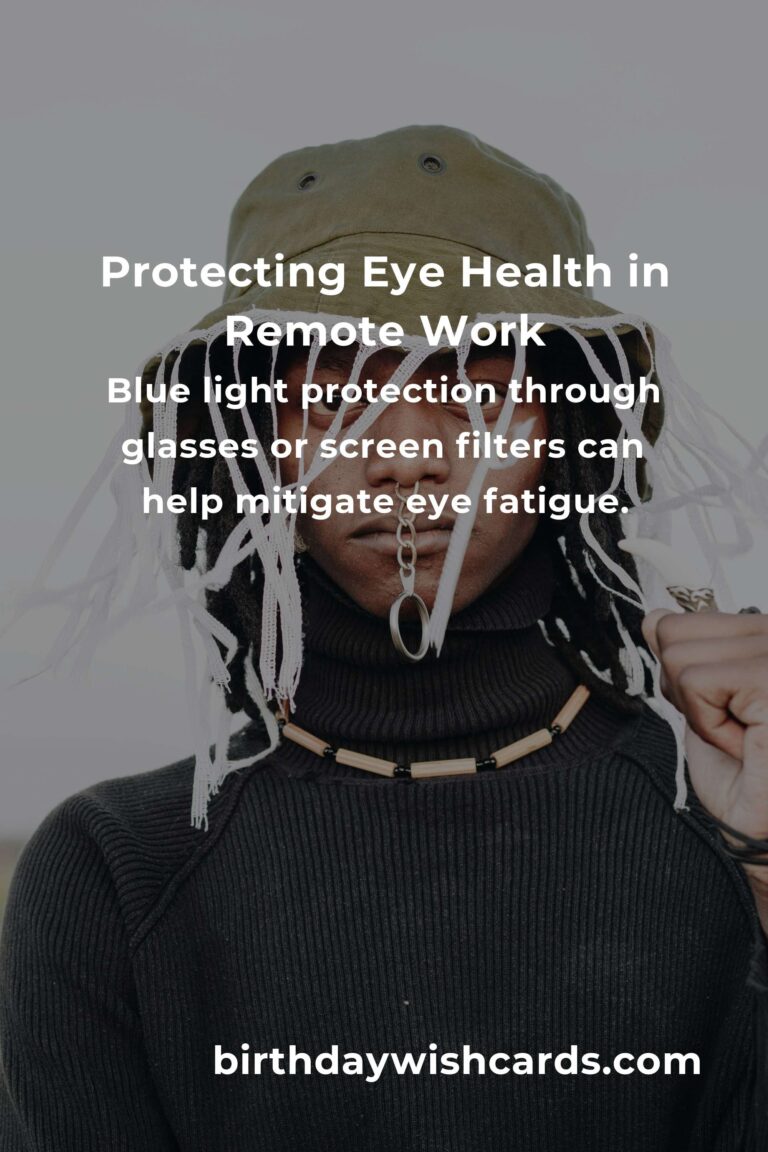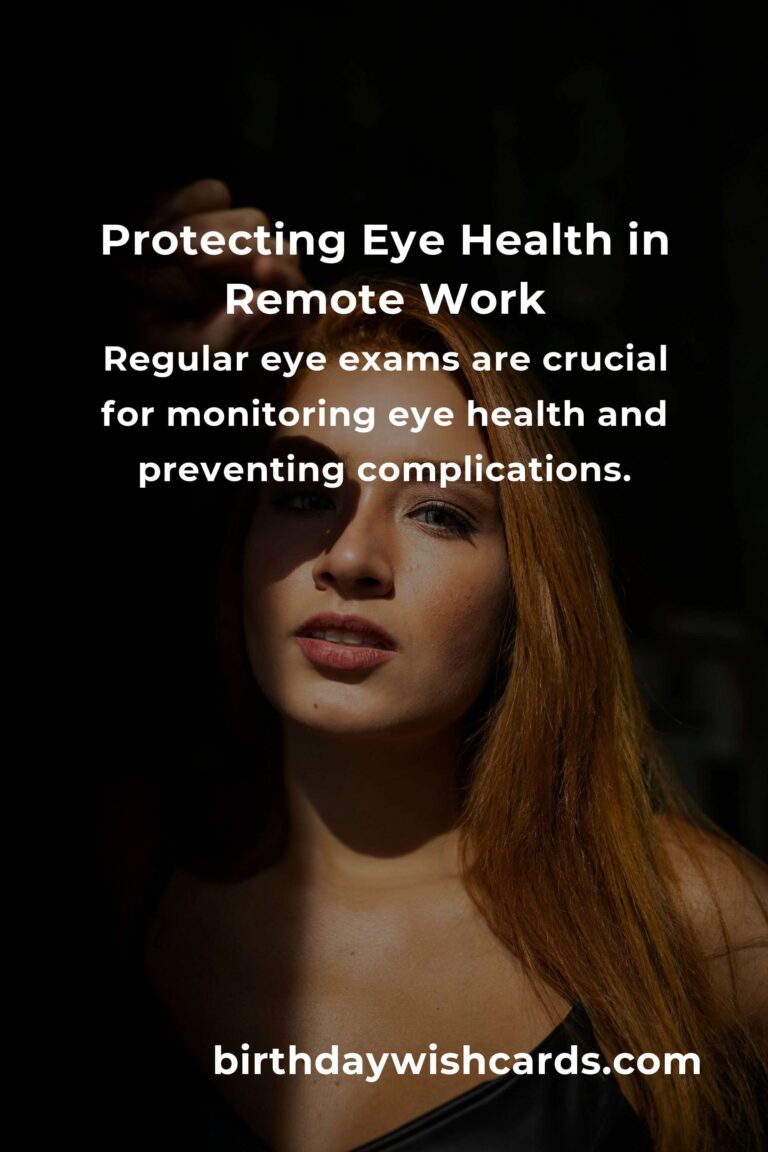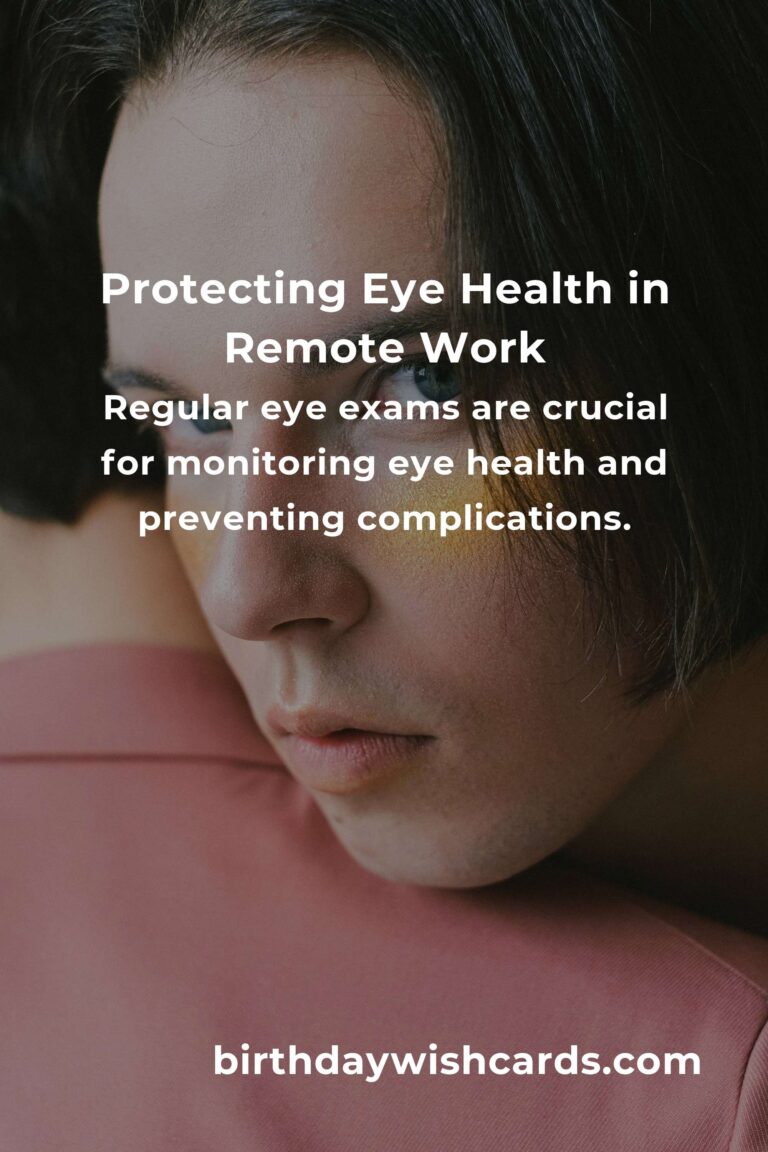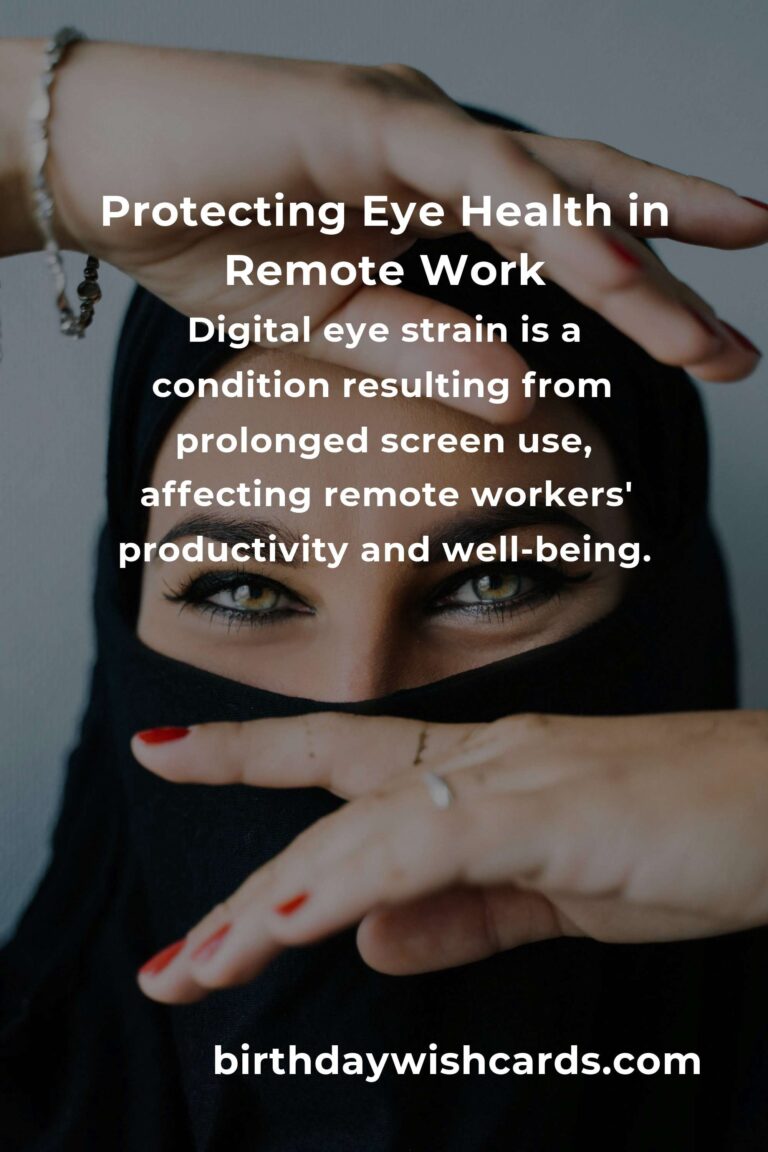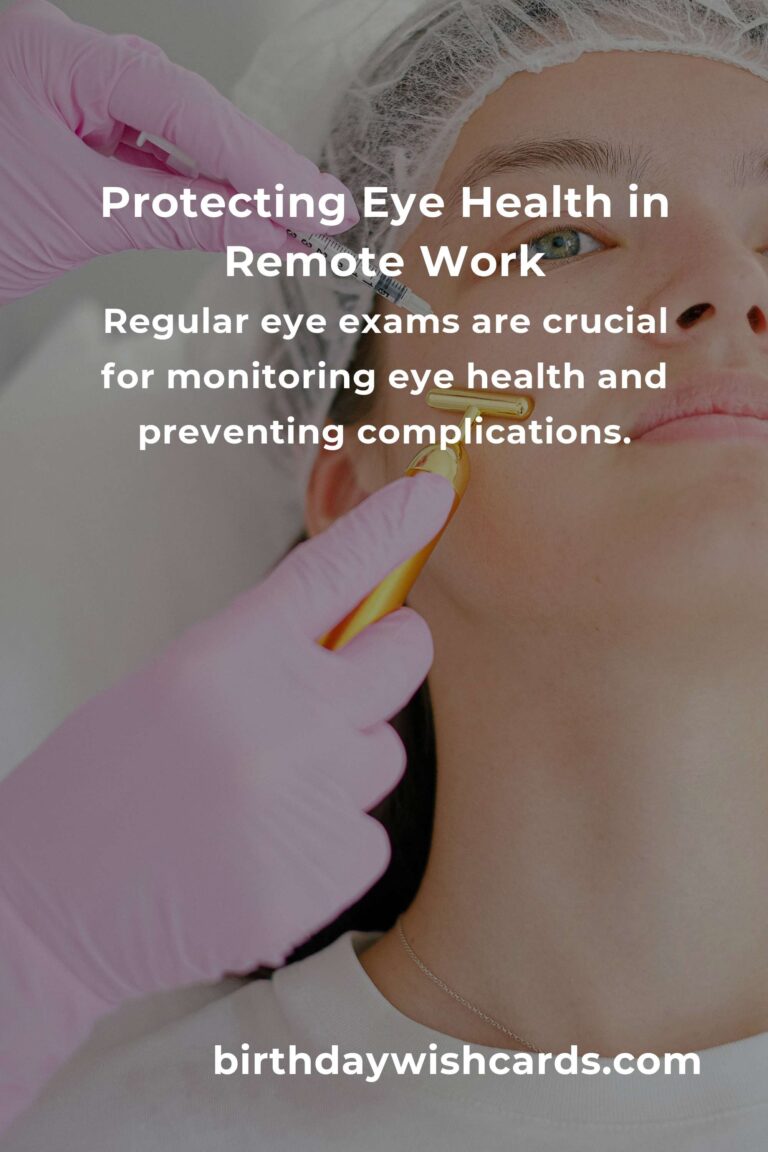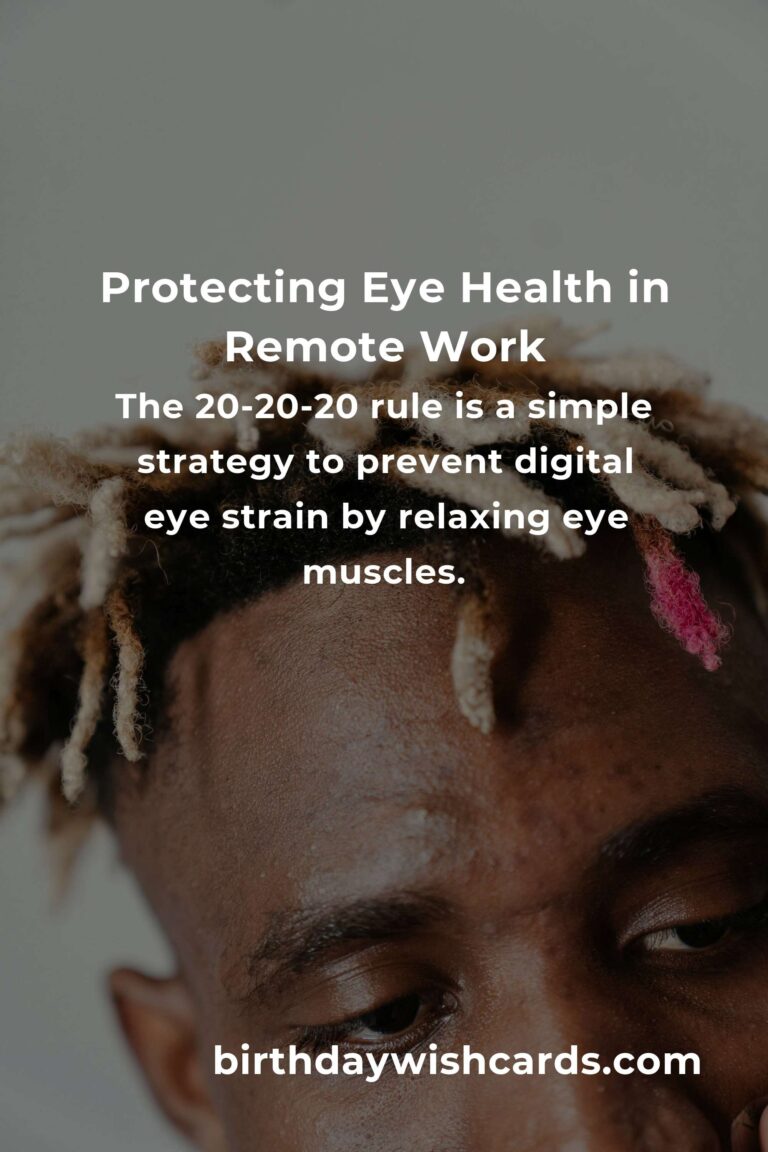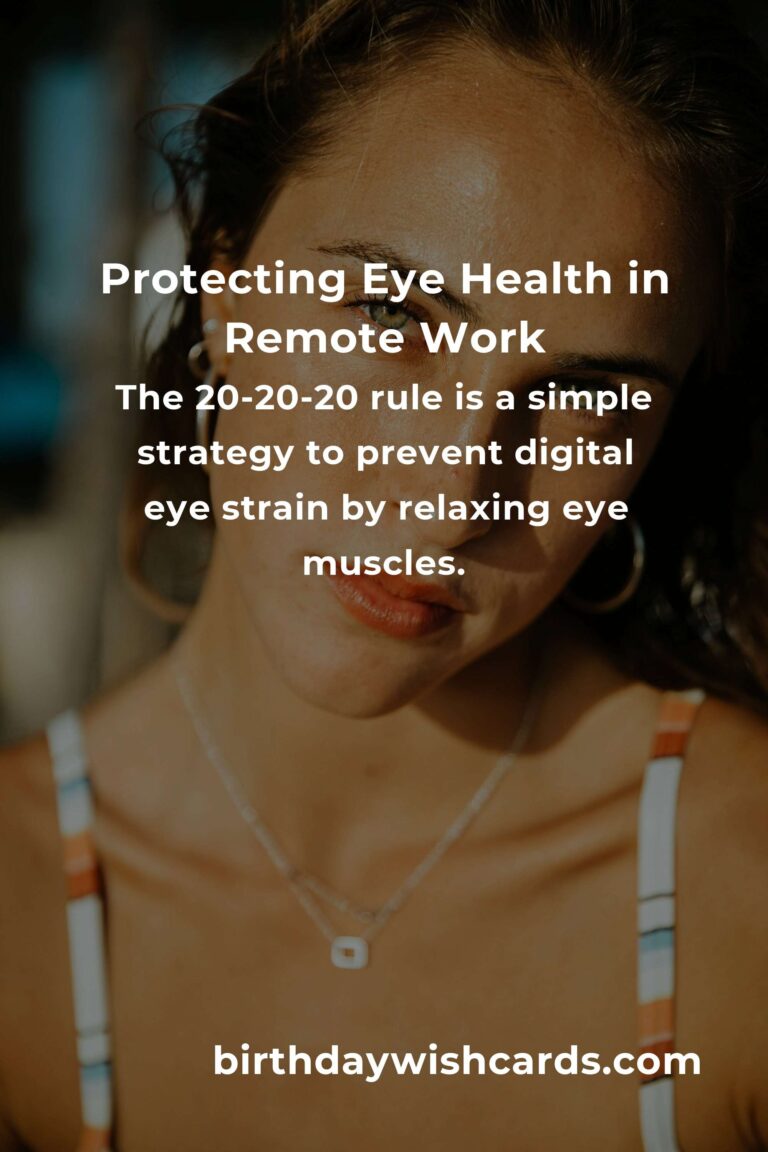
Introduction
As remote work continues to be an integral part of our professional lives in 2025, ensuring eye health has become more crucial than ever. Prolonged screen time can lead to digital eye strain, also known as computer vision syndrome, affecting productivity and well-being. This comprehensive guide will equip remote workers with the knowledge and strategies needed to protect their eye health in a digital world.
Understanding Digital Eye Strain
Digital eye strain is a condition characterized by a combination of eye and vision-related problems resulting from prolonged computer, tablet, e-reader, and smartphone use. Symptoms may include dry eyes, blurred vision, headaches, and neck and shoulder pain. It’s essential for remote workers to recognize these symptoms early to prevent long-term damage.
Optimizing Your Workspace
Proper Lighting
Ensure your workspace is well-lit to reduce glare on your screen. Position your computer screen to minimize reflections from windows and overhead lights. Consider using task lighting to illuminate your workspace without causing screen glare.
Screen Position
Position your computer screen at an arm’s length away, with the top of the screen at or slightly below eye level. This setup reduces the strain on your eyes and neck, promoting a more comfortable viewing experience.
Ergonomic Seating
Invest in an ergonomic chair that supports your posture. Adjust your chair and desk height to ensure your feet are flat on the floor and your knees are at a 90-degree angle. Proper ergonomics can alleviate physical strain and reduce eye fatigue.
Implementing the 20-20-20 Rule
The 20-20-20 rule is a simple and effective strategy to prevent digital eye strain. Every 20 minutes, take a 20-second break to look at something 20 feet away. This practice helps relax the eye muscles and reduce fatigue.
Blue Light Protection
Exposure to blue light emitted by digital screens can disrupt sleep patterns and contribute to eye strain. Utilize blue light blocking glasses or screen filters to reduce exposure. Many devices also offer built-in blue light reduction settings, which can be activated during extended screen use.
Regular Eye Exams
Schedule regular eye exams with an optometrist to monitor your eye health. Early detection of vision issues can prevent further complications. Inform your eye care professional about your screen time to receive personalized advice and recommendations.
Eye Exercises and Relaxation Techniques
Incorporate eye exercises into your routine to strengthen eye muscles and improve focus. Simple exercises, such as rolling your eyes or focusing on different objects at varying distances, can enhance eye flexibility. Additionally, practice relaxation techniques such as palming, where you cover your closed eyes with your palms for a few minutes to relieve eye strain.
Conclusion
By understanding the impact of digital eye strain and implementing these strategies, remote workers can protect their vision and maintain optimal eye health in 2025. Prioritizing eye care not only enhances productivity but also contributes to overall well-being. Stay proactive in managing your eye health as you navigate the demands of remote work.
Digital eye strain is a condition resulting from prolonged screen use, affecting remote workers’ productivity and well-being.
Optimizing workspace with proper lighting and screen positioning can significantly reduce eye strain.
The 20-20-20 rule is a simple strategy to prevent digital eye strain by relaxing eye muscles.
Blue light protection through glasses or screen filters can help mitigate eye fatigue.
Regular eye exams are crucial for monitoring eye health and preventing complications.
#EyeHealth #RemoteWork #DigitalEyeStrain #BlueLightProtection #Ergonomics


